On January 20th, we celebrate Saint Agnes Eve. Much folklore surrounds it, and according to legend, young women may be able to find out about their future husbands. Read on to find out more.


Juliet Capulet, from Shakespeare’s famous tragedy ‘Romeo and Juliet’, is one of the few (or perhaps the only?) characters in the Shakespeare canon whose exact age and birthday we know without a doubt.
How do we know? Shakespeare tells us!
In Act I of the play – before all the romance, sword fights and slayings occur – Juliet’s mother (Lady Capulet) and her Nurse discuss plans for Juliet’s marriage.
Lady Capulet seems a bit clueless about her daughter’s age. She asks the Nurse:
“Thou knowest my daughter is of a pretty age… She’s not fourteen?”
The Nurse replies:
“I can tell her age unto an hour. I’ll lay fourteen of my teeth she’s not fourteen! How long till Lammas tide?”
Juliet’s mom replies: “A fortnight and odd days.”
The Nurse then says: “Even or odd, of all the days of the year, come Lammas Eve at night she shall be fourteen.”

It is around two weeks until Lammas, and the Nurse remembers, to the exact hour, Juliet’s birth the night before.
(We will, for the moment, abandon our horror at the substandard parenting. Juliet and her mom do NOT have a close relationship. The Nurse has been Juliet’s pseudo-parent and confidante. We will also forget our horror at the idea of the adults planning a marriage for a thirteen year old…)
Lammas (also called Lughanasadh) is a traditional Harvest Festival celebrated on August 1st. Because the Nurse says ‘Lammas Eve at night’ we know Juliet was born on the night of July 31st.
This makes Juliet a Leo!

Not surprising. After all, Leo the Lion is ruled by the sun. They are headstrong and passionate, natural born leaders, and by far the most loving and generous sign of the zodiac.
If you have ever known a true Leo, you know they are loyal, big-hearted, and will stop at nothing to pursue Love. Juliet lives up to the Leo characteristics.
First, she falls deeply in love with Romeo. At first sight.
Well, you can’t blame her for that.

Secondly, when Juliet discovers Romeo is from the enemy camp, she comes up with the heartfelt but illogical scheme that they ought to simply change their names — and then (la la la) their love would be acceptable!
“What’s in a name? That which we call a rose
By any other word would smell as sweet…
Romeo, deny thy father and refuse thy name
And I’ll no longer be a Capulet.”
Youth and naivety. But hey, someone had to be optimistic.
Then, even though she has only known him for a few hours, Juliet says she is willing to lay it all on the line for Romeo:
“And all my fortunes at thy foot I’ll lay
And follow thee my lord throughout the world.”

Later, Juliet marries Romeo in secret. Even though she has only known him for one day.
When she learns Romeo has been exiled, Juliet is still determined to lose her virginity and have a night of passion with her husband. She bids the Nurse to arrange it:
“But I a maid, die maiden widowed?
Come, come, come, Nurse, I’ll to my wedding bed
And death if not Romeo take my maidenhead!”

After that she goes against her father’s wishes when she refuses to marry Count Paris. Here, Juliet the Leo proves herself headstrong and innovative. A girl of Juliet’s status going against Dad’s orders was definitely taboo. Of course, Mr. Capulet has no idea what his daughter has actually been up to…

Later, Juliet risks it all for love once again when she agrees to take Friar Laurence’s really bad, but well meaning advice of swallowing a potion to fake her own death. Juliet’s actions are the classic heart-over- head moves of a young and passionate Leo.
Shakespeare knew astrology.

And then of course, the shifty and fateful stars cross again. Romeo, thinking Juliet is ACTUALLY dead, drinks poison at her graveside. Upon awakening to find a dead Romeo, Juliet stabs herself. She knows life without Romeo is simply not worth living.
Ah well.
But you gotta give the girl credit for trying!
Juliet knew love. She knew love of the highest order, and more importantly she knew a universal law: Love, in its infinite supply, is the one thing that never runs out. This was perhaps Shakespeare’s hidden meaning.
Although it is often dismissed as a play about ‘those crazy star-crossed teenagers’ who were ‘dumb enough to commit suicide’ — I believe Shakespeare had a bigger message in mind. The world in which they lived refused to allow their love, and yet after their deaths, the Caps and Montagues resolve all conflicts. Love grows and goes on, even in death. Romeo and Juliet are buried together. Love never dies, love is infinite, and there is enough for everyone.
Consider Juliet’s words to Romeo in the famous Balcony Scene:
“And yet I wish for the thing I have.
My bounty is as boundless as the sea,
My love as deep; the more I give to thee
The more I have, for both are infinite.”
Pretty deep for a thirteen year old, eh? But then again, she was a Leo.

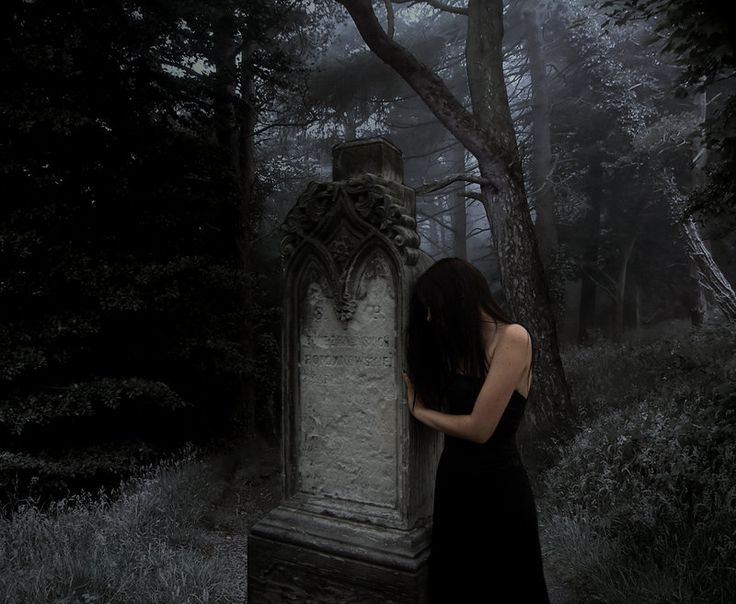
Okay Goths and Goth lovers, it is time to descend into the Underworld to celebrate your dark, sinister and delicious selves! Today, May 22nd is… (drumroll) … World Goth Day!
Chances are you may have never heard of this very unique holiday. (In the U.S. they would not want word to get out, trust me.) I learned about it from my friend, the awesome Australian blogger V Something Speaks. Check out her Goth Day post for some great info and recipes to help celebrate!
Because the term Goth is complicated and comes from many origins, I thought it would be fun to explore a bit of our twisted Gothic history. Who exactly were the first Goths, what does the term mean and how did it get associated with horror movies and punk rock?
The first Goths were ancient Germanic barbarian tribes, also called Visigoths and Ostrogoths. The term comes…
View original post 514 more words
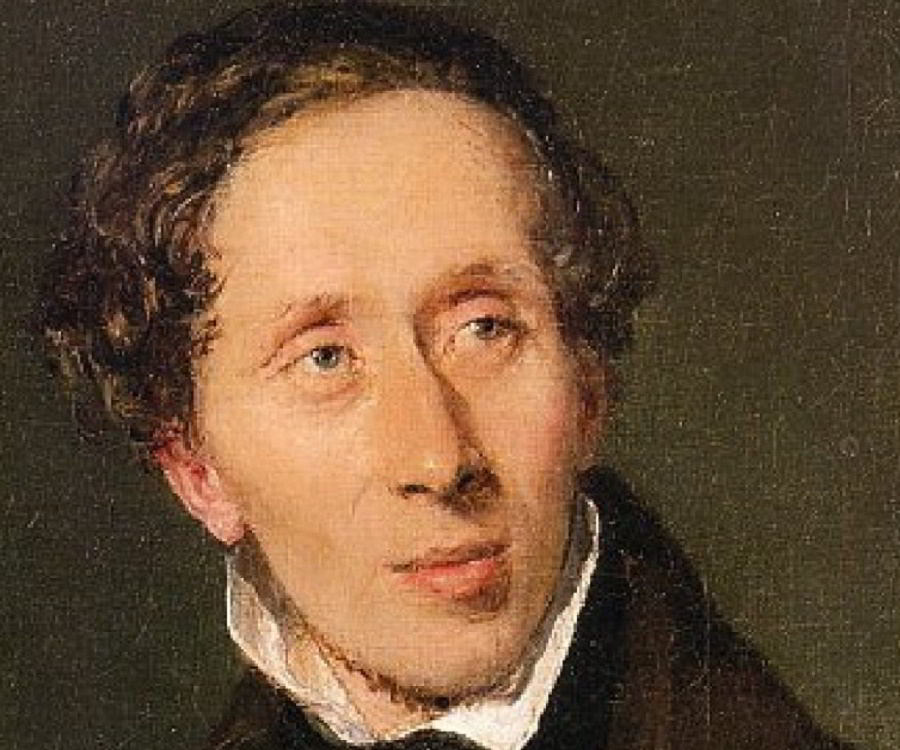
He was a weaver of tales who brought us The Little Mermaid, The Wild Swans, The Emperor’s New Clothes and the Ugly Duckling. In the course of his lifetime he wrote novels, travelogues, and over three thousand fairy tales which have been translated into 125 languages. His stories have universal appeal, transcending age and nationality. He created a unique mythology which continues to haunt us and remains part of our collective consciousness.
Hans Christian Andersen was born on this day, April 2, 1805 in Odense, Denmark. His own life story is a classic rags to riches that could have been one of his fairy tales.
His father, also named Hans, was a struggling tradesman and his mother Anne Marie a washerwoman. Hans Sr. died in 1816. Two years later Anne Marie remarried. It was then decided, for some odd reason, that Hans Jr. should no longer be allowed to…
View original post 811 more words

Forewarned is forearmed! So be careful out there! Today, April 1st, is the one day of the year when people have free rein and permission to pull pranks, tell lies and cause general mischief, all in the name of fools.
In the Tarot card deck, the Fool is card zero. The Fool is the very beginning. He is optimistic, open to all possibilities, and ready for adventure. He is too happy and unaware to have any inhibitions or sense of danger. I like to think of April Fool’s Day as a celebration of the Tarot’s Fool — a day of joy, lightheartedness, new beginnings and clean slates.
Have you ever wondered about the origins of April Fool’s Day? It seems kind of crazy. Who would dream up such a thing and why? Although historians cannot agree on any one particular source for the day, there are some clues as to…
View original post 964 more words

She appeared as a mystical queen, dressed in white and blue, to the teenager Bernadette Soubirous in the year 1858, at a grotto near Lourdes France. The grotto became the site of a freshwater spring which has miraculous healing powers. Her Feast Day is celebrated on February 11, the same day she made her first appearance to Bernadette. She identified herself as “The Immaculate Conception”, thus revealing herself as the Virgin Mary, the mother of Jesus. She appeared to Bernadette a total of eighteen times that year.
Was the Lady of Lourdes real, or a mere figment of the overactive imagination of a dreamy teenager? Read on to find out more about The Lady and the girl who witnessed her!
LIFE IN THE DUNGEON

Bernadette Soubirous was born on January 7, 1844. She was the daughter of François Soubirous (1807–1871), a miller, and Louise (née Casteròt; 1825–1866), a laundress. She was the eldest of nine children, although only three of them lived to adulthood. Bernadette was basically a peasant, and a nobody. She was poorly educated. She could barely read or write, and spoke only her native language of Occitan, which was spoken by the local population of the Pyrenees region where she lived. As a child she suffered with asthma that kept her out of school.
Bernadette’s family lived in abject poverty. France itself was suffering a financial depression also. By the time of the events at the grotto, the Soubirous family was so poor they lived in a one-room basement, formerly used as a jail, called le cachot, “the dungeon”. Here, they were housed for free by Louise’s cousin, André Sajoux.

In addition to their poverty, Bernadette’s parents also suffered from alcoholism. It was, by all appearances, a pretty bleak childhood.
Yet it is often the most lowly who are chosen to experience miracles…
A LADY IN WHITE

On February 11, 1858, when Bernadette was fourteen years old, she was out gathering firewood with her sister Tonette and a friend. The girls became separated when the sister and friend decided to wade through a stream as there was more wood on the other side. Tonette, knowing Bernadette’s asthma could be affected by the cold water, urged her to wait behind. While Bernadette was waiting, she noticed a sudden wind blowing through the bushes. She then looked up and saw “The Lady” standing in the grotto.
Of her experience, Bernadette said:
“I saw a lady dressed in white, wearing a white dress, a blue girdle and a yellow rose on each foot, the same color as the chain of her rosary; the beads of the rosary were white … From the niche, or rather the dark alcove behind it, came a dazzling light.”
When the other girls came back, they knew something was up with Bernadette. She looked weird, even illuminated. She took off her socks and waded through the cold stream that Tonette had warned her to stay out of. Even though it was cold February, Bernadette insisted the water felt warm, her whole body felt warm. Bernadette then told the other girls of The Lady she had seen. She asked them to tell no one, and they both promised to keep it a secret.
HOLY MARY OR DEVIL’S DAUGHTER?
Tonette, however, being a proper sibling, broke the promise and reported the incident to their mother. Bernadette’s mother ordered her to never return to the grotto, thinking that the apparition must be something evil. Bernadette, however, disobeyed her mother and returned to the grotto. But before she went, she made a visit to the local priest, explaining to him what she had seen. The priest probably did not believe her, but he gave her some holy water just in case.
Bernadette was to bring the holy water to the grotto and sprinkle it on The Lady. This was a test to make sure the Lady was, indeed, a holy thing, and not of the Devil. (Reportedly, the Devil cannot tolerate holy water and would have had an adverse reaction. Remember ‘The Exorcist’? When confronted with holy water, the Devil writhed in pain, shouting “It burns!” )

But The Lady took on the holy water just fine, therefore convincing Bernadette she was of good and of God.
The Lady made a total of eighteen appearances, ending on July 16th. For the first few times, The Lady said nothing, but on the third time she asked if Bernadette would come to visit her fifteen more times. Bernadette agreed. She also told Bernadette “I promise to make you happy, not in this world, but in the next.” The Lady, of course, spoke to Bernadette in the language of Occitan, not the more common language of French, thus proving that Bernadette had been somehow chosen for these messages.
TAKE ME TO THE RIVER…
The next time Bernadette went to the grotto, other people, curious to see the apparition, followed her. The Lady asked her to dig in the dirt. Bernadette did so. At first, she found nothing, but as she dug deeper, she hit water. The water was at first muddy, but soon emerged as a crystal clear spring!
There was a woman in the crowd who had followed Bernadette to the grotto. This woman had suffered an accident, and had paralyzed fingers. The woman came forth and put her fingers in the water. As soon as she did so, the paralysis was healed.

After that, crowds of people followed.
The freshwater spring eventually became the baths of Lourdes. When the word got out that the water was miraculously healing, pilgrims began to visit in droves. In 1883, the Catholic Church set up a special committee to investigate the healings. To date, more than 7,000 miraculous healings have been attributed to the water of Lourdes, but only 70 of them are officially recognized by the Catholic Church.
Not everyone believed Bernadette. The townspeople were divided. Some of them thought she was telling the truth, and faithfully followed her to the grotto. Others insisted the girl must be crazy and petitioned for her to be put in an asylum.
EAST OF EDEN
When Bernadette went to the grotto on March 25th, The Lady spoke again, stating “I am the Immaculate Conception.” Bernadette, however, with her meager education and her naiveite, had no idea what the word “conception” actually meant. She went to report this to her priest, and he was dumbfounded. The dogma of the Immaculate Conception had only recently been accepted by the Catholic Church.
The Immaculate Conception of Mary is a doctrine which states that Mary herself was conceived without Original Sin in her mother’s womb. Original Sin is the generational sin of Adam and Eve, which all humans are said to inherit. But seeing as how she was destined to be the mother of Jesus, Mary had to be absolutely pure. Thus Mary was created as a special being, “The Immaculate Conception”, free from sin since the time her mother’s egg met her father’s sperm.

Contrary to popular belief, Immaculate Conception does not refer to the virgin birth of Jesus. However, The Lady picked a unique date to reveal herself to Bernadette. March 25th is the Feast of the Annunciation, marking the very day the angel Gabriel appeared to Mary to inform her that she was a pregnant virgin!
During the rest of Bernadette’s visits to the grotto, The Lady asked her to tell people to pray and repent. She also asked that a church be built on the site of the grotto.

Was The Lady authentic? The Catholic Church thinks so. The church spent four years investigating the matter, and in 1862 confirmed the authenticity of the apparitions.
As for the miraculous spring water, the 70 cases that have been declared as authentic miracles underwent an investigation by the Lourdes Medical Bureau. The Bureau determined that these cases are indeed miracles, because after “extremely rigorous scientific and medical examinations” they failed to find any other explanation. These cases involved the crippled being able to walk, heart trouble and edema cured, paralysis cured, and the healing of many other sicknesses. The Lourdes Commission ran an intensive analysis on the water and found that, while it had a high mineral content, it contained nothing out of the ordinary that would account for the cures attributed to it. Bernadette said that it was faith and prayer that cured the sick: “One must have faith and pray; the water will have no virtue without faith.”
The chapel that The Lady requested was built on the grotto. To this day, as many as 6 million pilgrims visit each year.
SONG OF BERNADETTE

As for Bernadette, she disliked all the attention the spectacle had brought her. She left home to attend a school run by the Sisters of Charity in Nevers, France. There she finally learned to read and write. Bernadette became a nun at the Sisters of Charity. Her new name was Sister Marie Bernarde, and she had a special devotion to Saint Bernard. She spent long hours transcribing texts about him. She also became a skilled embroiderer, creating beautiful vestments.
Unfortunately, the healing waters of Lourdes did little for Bernadette’s sickly conditions. She continued to be plagued with asthma.
I know, I know! All you naysayers are now saying, “Hmmph! Some water. Couldn’t even heal Bernadette!”
But wait. Consider a more mystical, and bigger meaning. After all, The Lady herself had told Bernadette verbatim “I promise to make you happy, not in this world, but in the next.”
Bernadette died of tuberculosis at the tender age of thirty-five, on April 16, 1879. On her deathbed, she was still praying the rosary, and proclaimed, “all this is good for Heaven!”
DIGGING UP THE DEAD

Even after her death, Bernadette remained a woman of interest.
The church wanted to declare her a saint, but before this could officially happen, her body had to be exhumed. Here’s where it gets a bit vampiric…
The church exhumed Bernadette’s body on three separate occasions, in 1909, 1919, and finally in 1925.
Upon the first exhumation, a full thirty years after her death, according to official church accounts, the body was still young and intact.
Upon the second exhumation, in 1919, the attending doctor said: “The body is practically mummified, covered with patches of mildew and quite a notable layer of salts, which appear to be calcium salts… The skin has disappeared in some places, but it is still present on most parts of the body.”
Upon the third exhumation, in 1925, the body was still intact enough for the church to declare an official miracle. However, an imprint was made of her face (which had reportedly blackened, although the skin was still intact) and a wax mask was placed over it. The body was put in a crystal coffin.

Bernadette was canonized as a saint by Pope Pius XI on December 8, 1933. (December 8th is also the Feast of the Immaculate Conception!)
The body of Bernadette, it its crystal coffin, lies today in the main chapel of the Convent of St. Gildard in Nevers, France. A constant stream of pilgrims visits the saint’s resting place to seek her intercession.
What do you think of Bernadette and The Lady? Let me know in the comments!


She was a Christian martyr, beheaded at the orders of the Roman emperor Diocletian, on January 21st, 304 AD. She is the patron saint of girls, virgins, gardeners, and victims of sexual abuse. Her legend includes many supernatural occurrences, and Agnes was one of the most popular saints in 18th and 19th century England.
Agnes of Rome was said to have supernatural powers. These included the ability to make hair grow at a rapid level, the ability to strike men blind, and even the ability to raise the dead. Her Feast Day falls on January 21st, and on its eve, January 20th, it is said that young single ladies may be given dreams of their future husbands by Saint Agnes. But only if they follow certain rituals. Some of these rituals are quite bizarre and involved—more about them later!
But first, who was Agnes of Rome and how did she acquire such patronage?
SILVER SPOONS
Born in Rome, in the year 291 AD, Agnes was the daughter of a wealthy nobleman. She was very beautiful, and very rich. Before her lay a life of extreme privilege. This was both a blessing and a curse, since it ensured, for better or for worse, that many young suitors wanted to make her a bride.

When Agnes was only thirteen years old, the guys came a’ courting. Agnes, however, was a devout Christian. And this was a world where Christianity was illegal, condemned by the government, and Christians were regularly fed to the lions by Roman authorities. Agnes vowed to never marry and keep her virginity. This was a most dangerous decision, indeed. (At the tender age of thirteen, the girl was probably terrified, and rightly so!)
Needless to say, the local young men were not happy about this. They too, were of noble birth and used to getting what they wanted. No way was Agnes going to get away with this pious behavior!
RAPUNZEL RAPUNZEL…
One of Agnes’ suitors happened to be the son of Sempronius, an important Roman prefect. When Agnes refused to marry him, the son got mad and convinced his father to arrest her for being a Christian. For her punishment, Sempronius came up with the most humiliating thing imaginable. Agnes was to walk through the streets naked, subject to all kinds of taunts and embarrassment, not to mention assaults. The walk would end at a brothel, where Agnes would then be forced to work as a prostitute for the rest of her life.
Agnes was stripped naked and ordered to begin her walk of shame—but her nakedness did not last for long! Agnes’ hair began to grow rapidly, so fast that in no time it was down to her toes, thick and lustrous enough to clothe her entire body. (And you thought Lady Godiva was good?)

MORE MIRACLES
Nonetheless, Agnes was forced to enter the brothel. It is said that men came, with the intent of raping her, but upon seeing that she was such a pure and beautiful girl, many could not bring themselves to defile her. The ones that did dare attempt it were instantly struck blind!

The son of Sempronius, eager to get his due, showed up at the brothel with the intention of raping Agnes. But, before he could even get his toga off, the boy was struck, not only blind, but dead! Agnes, however, was not beyond forgiveness. Maybe she realized she had killed the son of a powerful politician and had second thoughts. For whatever reason, Agnes began to pray over the villain. Miraculously, he was restored back to life.
After this spooky and powerful display of Agnes’ supernatural abilities, Sempronius became terrified. He recused himself from the entire matter. But Agnes was still to be given no peace. Other Roman authorities, sent at the command of Emperor Diocletian, came to the brothel and accused Agnes of witchcraft. Her punishment was—you guessed it! To be burned at the stake.
They bound Agnes in ropes and tied her to the woodpile. But when they lit the pyre, there was a problem. Apparently, the stakes would not burn, and neither would Agnes!

The Roman authorities were really fed up by now. They ordered one of their guards to behead Agnes and finally put an end to her. And so it was, she died.
Or did she?
Agnes’ parents, being rich noble people, had her buried in a well sealed tomb. According to the legend, eight days later Agnes’ parents went to visit her gravesite. There they encountered a chorus of angels, and Agnes herself, standing outside the tomb. There was also a white lamb by her side.

SILENCE OF THE LAMBS
The lamb, a symbol of purity, is one of the icons still associated with Saint Agnes. She has traditionally been depicted as a young girl with long hair, holding a lamb. The word ‘agnus’ in Latin means ‘lamb’.
The Vatican has even gotten involved with an homage to Saint Agnes!
Ever since the 16th century, the Vatican has performed a ritual of the Blessing of the Lambs on Saint Agnes’ feast day. On this day two lambs are brought from the Trappist abbey of Tre Fontane in Rome and are blessed by the Pope. The following summer, the lambs are shorn, and their wool is used to weave sacred garments called pallia. On the 29th of June, which is the feast of Saints Peter and Paul, the Pope gives these pallia to the newly appointed archbishops.
ALL THE SINGLE LADIES!

Now back to Saint Agnes Eve, as all the single ladies await their dreamy husbands… Be assured that Saint Agnes may send you visions of your future man! But only if you follow certain rituals, which are as follows:
“Saint Agnes, that’s to lovers kind
Come ease the trouble of my mind.”
Then merely go to sleep, and wait for your dreams. According to some legends, it is said that the man himself will appear in your room, and the two of you will have a great feast (thus making it worth skipping supper!)
For the more adventurous, there is this ritual from Scotland: On Saint Agnes Eve at midnight, girls would gather together in a field.
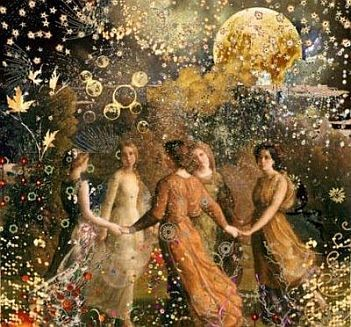
They would throw grain on the soil, representing growth and fertility. They would then recite this prayer:
“Agnes sweet and Agnes fair,
Hither, hither, now repair;
Bonny Agnes, let me see
The lad who is to marry me.”
So if you happen to live near a field, and have some friends who are game, this might be a fun ritual to try.
POETRY IN MOTION
Saint Agnes Eve became wildly popular in 18th and 19th century England. John Keats, the famous poet, even dedicated one of his most beloved poems to it, titled “The Eve of Saint Agnes”.

“They told her how, upon St. Agnes’ Eve,
Young virgins might have visions of delight,
And soft adorings from their loves receive
Upon the honey’d middle of the night,
If ceremonies due they did aright;

As, supperless to bed they must retire,
And couch supine their beauties, lily white;
Nor look behind, nor sideways, but require
Of Heaven with upward eyes for all that they desire.”
The entire poem can be read here: https://www.poetryfoundation.org/poems/44470/the-eve-of-st-agnes
Have a beautiful and blessed feast of Saint Agnes.

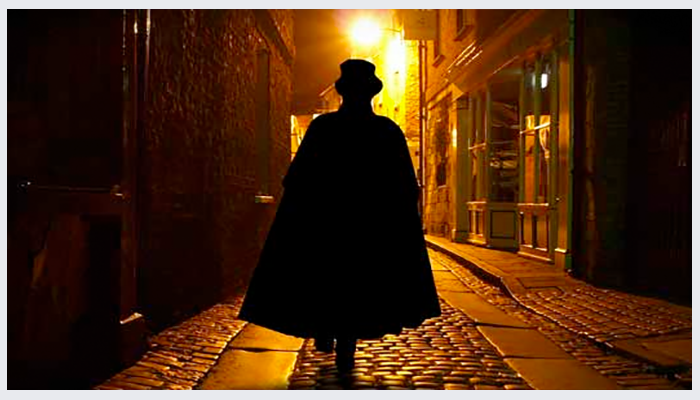
Today is Friday the Thirteenth. How are you feeling? Many people fear this day. They just want to get the day over with, and they will be extra careful to avoid ladders, cracks in the sidewalk, and black cats. There is even a scientific name for fear of Friday the Thirteenth! It is technically called “Paraskevidekatriaphobia”. (I can’t pronounce it, either.) But it’s a thing, discussed among psychiatrists and medical professionals. For many, the fear is real.
But is there any truth to the rumors? Are Fridays and the number thirteen so very bad? Read on to find out some facts and fictions of this superstition…
THE KILLER INSTINCT
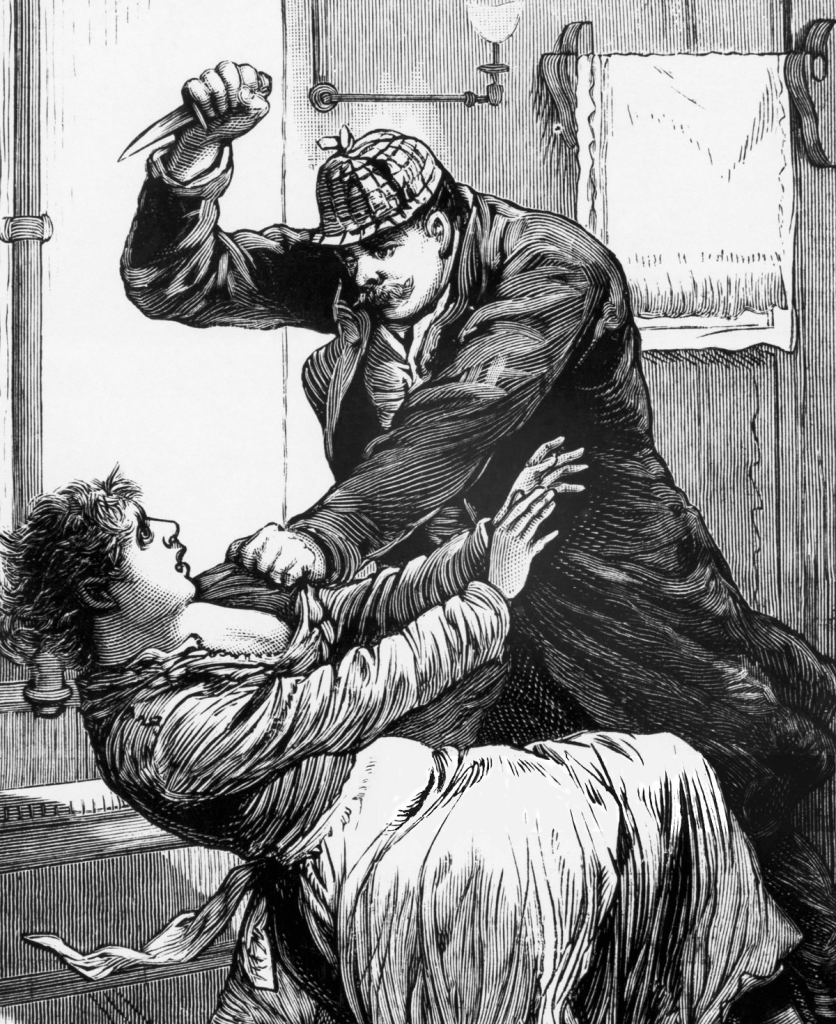
Have you ever noticed that notorious killers have 13 letters in their names?
JACK THE RIPPER (count ’em)
CHARLES MANSON (count ’em)
JEFFREY DAHMER (you guessed it!)
Cue eerie music.
Humankind has long associated the number 13 with evil. Some office buildings and hotels have been built without a 13th floor. Some airlines, including Continental and Air France, do not have a 13th row in their planes. Even Winston Churchill, the ultimate pragmatist, refused to sit in the 13th row in theaters.
But wait! Thirteen may not be as bad as we think.
Consider the ancient Aztecs. They were pretty smart, and they revered the number 13. The Aztec week lasted 13 days. They measured their year in 260 days. It was divided into 20 thirteen day periods. The thirteen day period was called a Trecena.
The Aztecs even had a goddess of the number 13.

In Aztec mythology, the goddess Tlazolteotl ruled the 13th Trecena. She was, to be fair, a bit of a bad girl — the goddess of sin and patron saint of adulterers. However, Tlazolteotl was also beneficent and wise. It was her place to forgive sins of a sexual nature. In Aztec culture, she was associated with the steam bath and encouraged it as a purification ritual.
In Tarot, although 13 is the Death card, it is not necessarily to be feared, as the card represents true change and reinvention that can only come about through symbolic death.
THE BETRAYAL OF CHRIST
One of the reasons 13 got its bad rap was because of the Last Supper. Jesus had 12 disciples, so including himself there were 13 people attending the infamous dinner. Some say Judas Iscariot was the last to arrive (the 13th guest). Judas eventually betrayed Jesus with a kiss, pointing him out to the Roman soldiers as a political agitator. This, of course, resulted in the crucifixion of Jesus.

It is believed that Judas the betrayer later committed suicide by hanging himself from a tree, thus adding to the horror.
On the other hand — these events were necessary for the salvation of humankind. The Gospel of Judas speaks of these events as a Divine plan, conspired between Jesus and Judas, all necessary for the enlightenment of planet Earth. So maybe 13 turned out to be lucky in the long run…
“SUPERSTITION BE DAMNED!”
In 19th century America, a society was created to dispel the myth of unlucky 13, once and for all!
In 1881, Captain William Fowler, an American Civil War veteran, took it upon himself to form “The Thirteen Club”. Fowler had taken part in 13 major battles and had been forced to resign on August 13, 1863. On September 13, 1863 he purchased the Knickerbocker Cottage in New York. The cottage would later be used for his club dinners.
The first dinner of The Thirteen Club took place at 8:13 P.M. on Friday, January 13th, 1882, in Room 13. There were of course, 13 people in attendance. All subsequent meetings took place in room 13 on Friday the 13th.

On the December 13, 1886 meeting, Robert Green Ingersoll, a member and prominent lawyer, declared:
“We have had enough mediocrity, enough policy, enough superstition, enough prejudice, enough provincialism, and the time has come for the American citizen to say: “Hereafter I will be represented by men who are worthy, not only of the great Republic, but of the Nineteenth Century.”
By 1887, the Thirteen Club was 400-strong, over time gaining five U.S. Presidents as honorary members: Chester Arthur, Grover Cleveland, Benjamin Harrison, William McKinley and Theodore Roosevelt. Not bad pickings!
It should also be noted that the United States came from 13 original colonies. The 13 stripes on our flag represent these. (Count ’em!)

FRIDAY NIGHT LIGHTS
And what about the day itself? Is the day so intrinsically evil? According to the nursery rhyme, “Friday’s child is loving and giving…” Besides, that, most folks love Friday, as it is the beginning of the weekend.
Friday got a bad rap because of its association with evil events in the Bible. A lot of bad stuff allegedly happened on Fridays. Besides Jesus crucifixion, the Great Flood, which wiped out all humankind, except Noah and his brood, is believed to have begun on a Friday.
Also, the day the Devil tempted Adam and Eve in the Garden of Eden also supposedly took place on a Friday. This led to the fall of humankind, the banishment of Adam and Eve from paradise, and a lot of bad stuff in general.

But Friday can also be good. Even the day of the Crucifixion, for example, is known as “Good Friday” — the implication being that even great suffering will eventually lead to wisdom, enlightenment, and happiness.
The name Friday comes from the Old English work frīġedæġ, meaning the “day of Frig”, thus associating it with the Germanic goddess Frigg, and also the Roman goddess Venus. Both are goddesses of love.
In Norse mythology, Friday is the day of Freya. She is the goddess of love, sex, beauty, fertility and gold. Freya was also quite fond of black cats. They accompanied her during her various visitation, and she often had black cats riding around with her in her magic chariot! What’s not to like?

Have a safe and happy Friday the 13th!


“Rhiannon rings like a bell through the night
And wouldn’t you love to love her?
Takes to the sky like a bird in flight
And who will be her lover?”
She may not exactly be a witch. Depending on who you talk to, Rhiannon may be a Celtic goddess, a Christian queen, a Welsh sorceress, or a Scottish fairy. Nonetheless, these origins are witchy enough. Rhiannon had some magickal powers, and a special connection to the Winter Solstice, which is now upon us.
On this, the longest night of December 21st, it is said that Rhiannon rides on a white horse through the dreams of her people. During this supernatural intervention, she is able to bring humans to liminal spaces and Otherworlds. There, mere mortals are able to create their own visions of glory, and make their deepest desires come true! For this reason, the night of the Winter Solstice was called “Wish Night” in Wales and Scotland.
But who was Rhiannon, and why did she have such magickal powers?
The first writings about Rhiannon appear in the Mabinogion, a collection of Welsh mythology, written between the 11th and 13th centuries. The Marinogion is considered one of the earliest works of British storytelling. However, her roots trace back much earlier, to the ancient Celts, where she appears as a sun goddess. She is associated with horses and birds, especially songbirds. Rhiannon was said to have kept three pet songbirds who tweeted melodies that had the power to wake the dead, or lull an army to sleep! She is also said to rule the element of wind.
Interestingly, the Stevie Nicks song has references to birds and wind, although Nicks claims that at the time she wrote it, she was unaware that Rhiannon had this association.
“She rules her life like a fine skylark
And when the sky is starless
All your life you’ve never seen a woman
Taken by the wind…”
Her name, “Rhiannon” comes from the Common Brittonic word for “queen”.
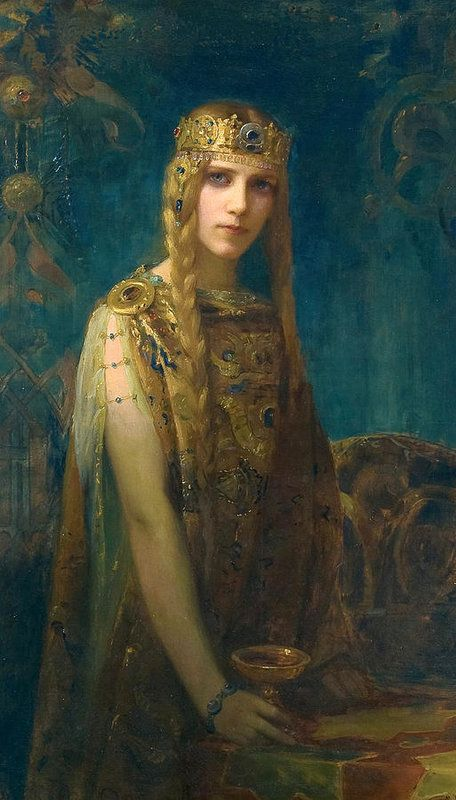
She is portrayed as wise, intelligent, powerful and strategic. She also had superhuman strength. Like King Arthur, Rhiannon is said to have ruled during the Early Middle Ages, between the fall of the Roman Empire and the rise of modern Britain.
In the Mabinogion, Rhiannon starts out as a fairy princess from the Welsh Otherworld, the daughter of a great fairy king. She was betrothed to marry a man named Gwawl, but she was not happy with this engagement. Instead, she was interested in a man named Pwyll—a human who also had supernatural powers and happened to be a king. It was Pwyll who drew Rhiannon into the human world.
Love at First Sight
One day Pwyll went to a fairy hill, and Rhiannon appeared to him as a goddess riding upon a magnificent white horse.

Needless to say, he was smitten, and rode after her. Since she knew every man loves a chase, Rhiannon outran Pwyll. The race lasted for three days, but finally Rhiannon allowed herself to be caught. Pwyll immediately proposed to her, and she happily accepted, as this would keep her from marrying the dreaded Gwawl. Rhiannon and Pwyll conspired together to fool Gwawl and get Rhiannon out of the betrothal.
As it turned out, most of the conspiring was done by Rhiannon. Pwyll seems to not have been very clever, and in the Mabinogion, Rhiannon says of her husband, “Never was there a man who made feebler use of his wits.” It was perhaps for this reason that Rhiannon, as queen consort, was said to rule early Briton, and is sometimes compared to King Arthur.

A few years after marrying Pwyll, Rhiannon gave birth to their son, a child born on May Eve, and named ‘Pryderi’. But tragically, the infant disappeared one night while under the care of his nursemaids. Because the nursemaids were scared that they would be accused of kidnapping, they came up with a plan to frame Rhiannon. (That’s loyalty for you!) Here’s where it gets really gross, so be warned.
Blood and Sacrifice
The nursemaids killed a puppy and then smeared its blood on the face of their sleeping queen. When she awoke, with blood all over her face, Rhiannon was accused of not only killing, but eating her son!
As penance, Rhiannon was made to sit outside the castle walls, and tell passersby what she had done.
“I am she who killed my only child, and this is my punishment, to sit here and tell my tale to all comers.”
This punishment went on for four years. Pwyll remained loyal to her during this time, never believing that his wife was capable of the heinous act. Rhiannon, it seems, accepted her fate and was obedient to her punishment. This, however, was a strategy as well, because as the punishment went on, the people became more loyal to Rhiannon and didn’t believe her to be guilty. Rhiannon gained the people’s acceptance through her unfair sentence. Also, by making a pubic display of things, Rhiannon knew the news of the prince’s disappearance would travel far and wide. Rhiannon realized that eventually, word may get around that her son was missing, she had been targeted unfairly, and thus he would be returned.
Return of the Son and the Sun
After the four year punishment was finished, the son did, in fact, return. He was travelling with a lord named Tyrnon, his adopted father. Because of his special fairy genes, the son had grown far beyond his four years, and now appeared as a young man. Tyrnon and Pryderi came as guests to Rhiannon’s castle. His parents suspected immediately that he was their lost boy.
As it turned out, Pryderi had been kidnapped by a monster. Lord Tyrnon had rescued him and raised him as his own. The young man, however, looked so much like Pwyll there was no doubt to his true paternity. Thus, the story had a happy ending. Pryderi remained at the castle with is true parents. Rhiannon was declared innocent of any wrongdoing. And when Pwyll died, Pryderi took over the kingdom and was a great ruler in his own right.
And as for Rhiannon…
“She is like a cat in the dark
And then, she is the darkness.”
Rhiannon went on to do many magickal things with her fairy ways. She was said to be a great mathematician, and the patterns of the solstice were calculated by her. This may have been the reason why she had special powers during the winter solstice, which is also, it should be noted, the return of the sun!
On this night, Rhiannon has the ability to infiltrate the dreams of humans. It is said she can then transport them to Otherwords, and Otherlands. Here, where time and dimensions are different, mere mortals are given the gift of creating their own visions. Hence, they can make manifest their deepest desires.
So be careful what you wish for tonight. Rhiannon may visit you, transport you to the Otherworld, and help make your dreams come true!
